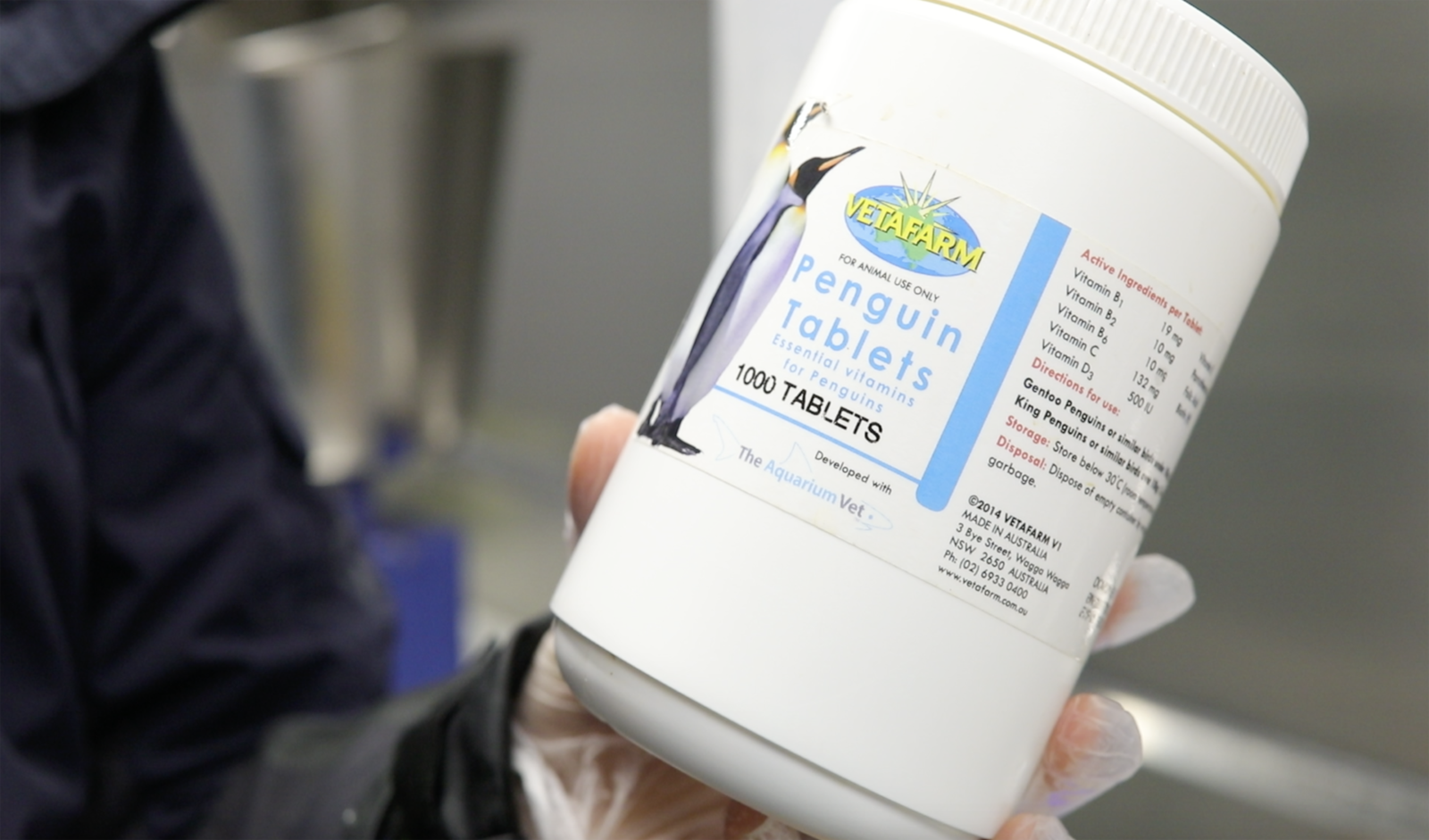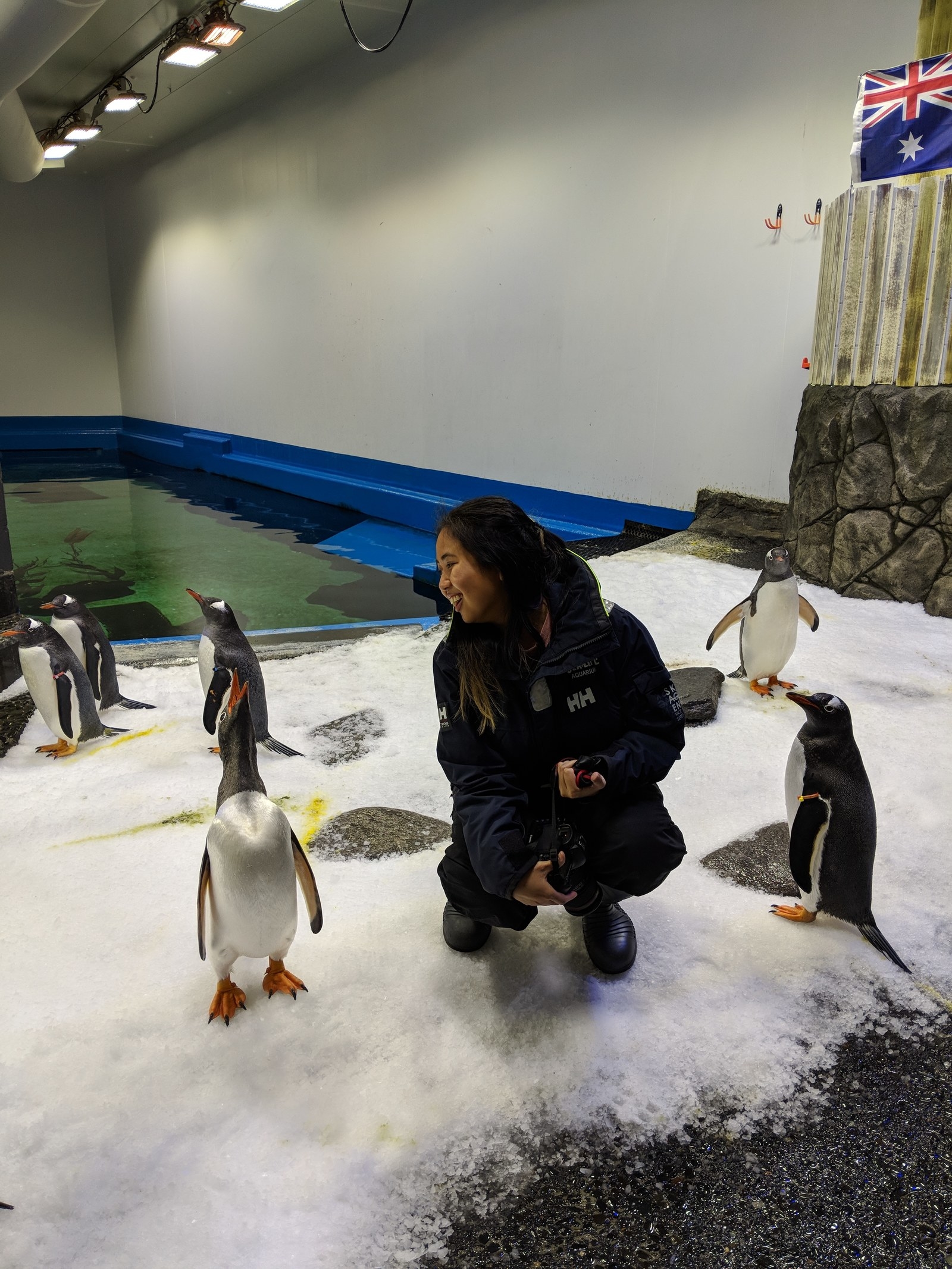Penguins are one of this planet's purest and most endearing family of birds.
So when I was offered the opportunity to be a penguin keeper for a day at Sea Life Sydney Aquarium, I was obliged to seize that opportunity with both hands.
Sydney Aquarium cares for two species of penguins: king and gentoo.
King penguins are larger and stand at just under one-metre tall, while gentoo penguins are a smaller and faster species that reach anywhere from 50-90cm tall.
They both live on the sub-Antarctic islands in the Southern Ocean surrounding Antarctica.
The temperature and lights in the Sydney Aquarium enclosure are synched with Macquarie Island, a Tasmanian State Reserve between the southern tip of New Zealand and Antarctica.
During winter Macquarie Island temperatures sit around 4C, which necessitates the wearing of this extremely fashionable uniform when entering the enclosure in Sydney.
I was very proud of this fancy trousers and boots combo.
Gentoo penguins are about as intelligent as domestic dogs and that makes them extremely curious. You have to remove all accessories and jewellery before entering the enclosure or the birds will attempt to eat or steal your belongings.
Sydney Aquarium's penguins are all captive-bred birds and as a result, they don't have immune systems equipped to fight off bacteria or viruses that we might carry in from the outside world.
Before we could get near the penguins, we had to go through some pretty stringent anti-bacterial measures involving quarantine rooms, boot and equipment cleaning, and repeated hand washing.
This was iodine solution, so you can just imagine how great my hands smelled after this.
Here's some news: these penguins take daily multivitamins.
The multivitamins are designed to supplement their frozen fish diet and contain the same combination of vitamins that you typically find in human tablets.
The keepers assured me that I (probably) wouldn't come to any harm if I decided to eat a penguin multivitamin.

The only ingredients that differ from human tablets are in the gentoo penguin multivitamins, which contain compounds from krill (they don't get to eat krill in the aquarium because of sustainable fishing concerns).
Canthaxanthin and pantothenate are both derived from krill in the wild and they're essential for maintaining gentoo penguin health as well as the orange colouring in their feet and beaks.
The keepers have to sneak the tablets into the fish, in much the same way that you have to hide vegetables in a toddler's dinner.
Trying to shove a multivitamin into a fish is trickier than it looks.
The gentoo penguins are weighed weekly and we're told they're very compliant with this procedure and will walk onto the scales themselves most of the time, purely because they like being around people.
Once the fish were prepared for feeding and we were thoroughly disinfected, we were allowed to enter the enclosure and meet the penguins.
They floated.
And did a little slip'n'slide.
All of the penguins have names and distinct personalities but to easily identify each bird, they have coloured bands around their wings.
There are 33 penguins in total in the Sydney Aquarium but we were told that the enclosure could fit twice that amount.
Penguins are poo machines and go every 17 minutes on average.
To keep the snow nice for the birds, a fresh layer of ice has to be laid down with a blower twice a day.
Penguin keepers must also scuba dive into the extremely cold pool twice a week to clean up the poo.
The king penguins were not impressed by my efforts with the ice machine.
The aquarium has seven king penguins in the enclosure and they tend to be a lot more suspicious of humans than the gentoo penguins.
We can confirm that the gentoo penguins will do just about anything to get up in your business.
This king penguin is called Arthur and he did not enjoy my company.
Gentoo penguins are aggressive feeders and they can reach speeds of 36km/h in the water.
The king penguins are fed separately because the gentoo colony would (understandably) stress them out.
Note the gentoo penguin that has gamed the system next to my boot.
In the wild the penguins tend to live for around 15 years but captivity can double this lifespan (one penguin at Pueblo Zoo in Colorado reportedly made it to 40 years old).
All of the penguins in the aquarium are fairly young and most are just reaching breeding age.
Penguins make long-term mates if they are able to breed.
A gentoo penguin couple.

The gentoo penguins in the aquarium have begun to pair up and these couples are obvious because the penguins spend a lot of time around each other and bow more than usual (a sign of respect amongst penguins).
The penguins will also sing when they're content, mostly at each other but sometimes at visitors.
My colleague Anna had a penguin sing at her (I was clearly not special enough).

